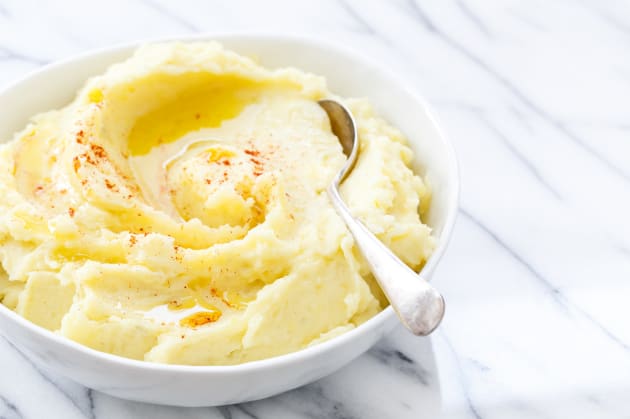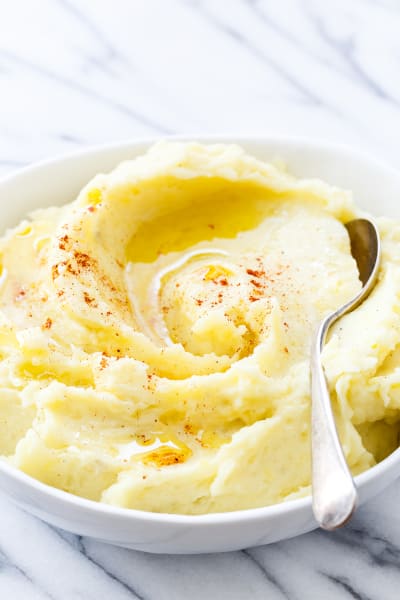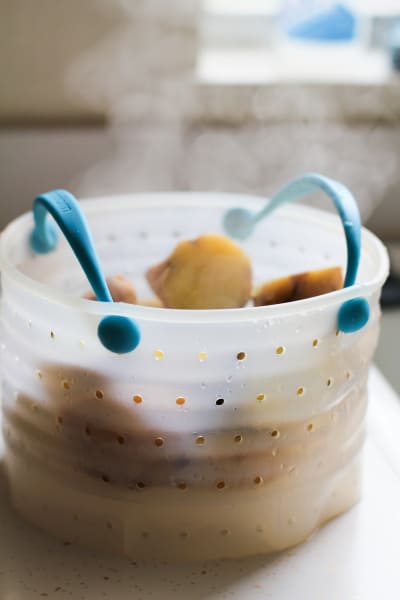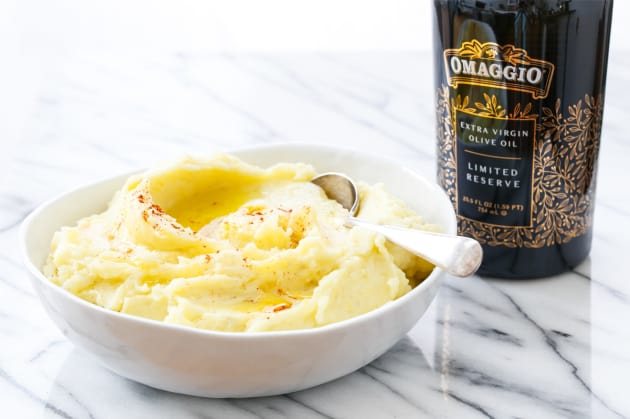What To Use Instead of a Potato Masher
Nicole AustinDon't have a potato masher but want to make mashed potatoes? These tools are the best substitutes.
Mashed potatoes are an easy delicious side dish and any home cook can easily master how to make mashed potatoes.
An inexpensive, filling and delicious side dish for any dinner, there are so many different ways to make mashed potatoes.
What do you do if you love those fluffy potatoes but don't have a hand masher? There are plenty of ways that don't require any special equipment.
If you're wondering what to use instead of a potato masher try these methods to make the best mashed potatoes.
Why We Love Mashed Potatoes
Basic mashed potatoes require very few ingredients that many people have on hand already such as potatoes, butter, cream or milk, and seasoning.
From there you can add things like onions, chives, roasted garlic, cheese, sour cream, cream cheese, Greek yogurt, ranch mix - the options are endless!
We love making olive oil mashed potatoes or garlic mashed potatoes to pair with things like meatloaf or roasted turkey breast.
We're big fans of the famed Pioneer Woman mashed potatoes and making Instant Pot mashed potatoes or slow cooker mashed potatoes.
The type of potato you use is a factor so choose a starchy variety such as Yukon Gold potatoes, Russett potatoes, or Idaho potatoes.
Starchy potatoes like Yukon Golds are best because they have a fluffy texture creating the perfect consistency when prepared properly.
An important factor for perfect mashed potatoes is how you mash them. Many mashed potato recipes call for a kitchen tool called a potato masher.
A masher is a fixed, manual-style tool that uses your arm strength and a rigid, flat, wire or perforated design to mash food.
If you don't have a potato masher there are some handy alternatives you may already have in your kitchen that will make quick work of saving the day.
How To Mash Potatoes Using a Ricer or Colander
Many professional chefs use ricers for making mashed potatoes because it is simple and the result is a fluffy mashed potatoes with a silky texture.
To use a ricer to make mashed potatoes, begin by following your recipe’s instructions for preparing the potatoes for mashing.
This typically involves boiling potatoes until they are cooked through, then removing them from the water.
Allow your freshly boiled potatoes to cool before adding them to a ricer.
Excess moisture can evaporate by following this simple step closely, and this will prevent your potatoes from becoming sticky or gluey.
To know if your potatoes have cooled, pay attention to whether or not there is steam still coming off of them.
You can also wash your hands thoroughly and touch the potatoes to check temperature after the steam is no longer visible.
Do not handle newly-boiled potatoes by hand if they are still steaming, as this is a scald or burn hazard.
Pass the cooled potatoes through a ricer, then mix in your milk, butter, or stock as your recipe calls for.
You can also go with your gut on this one - you’ll know the perfect potato combination when you see and taste test it!
If you don’t own a ricer, a colander will also break down your potato into small pieces that are rice-sized portions.
To do this, add the cooled potatoes to the colander and use a firm spatula to press the potatoes through the holes and into a medium sized bowl.
Then continue as though riced, by adding your next ingredients as desired.
A food mill also works for breaking down potatoes to a smooth consistency and may replace a ricer in the kitchen.
Is a Ricer or a Food Mill Better for Mashed Potatoes?
People often use a food mill rather than a ricer, as they yield similar results.
They are easier than a ricer to clean but harder to store, as a ricer fits in a typical kitchen storage drawer and a food mill does not.
If you are torn between investing in a ricer or a food mill, ask yourself what your storage situation is like and what your needs are.
A ricer is best for mashed potatoes and gnocchi, and a food mill works for both of those as well as homemade pasta, soups, purees, etc.
A ricer is less expensive than a food mill, so many people make their decision based on what will serve them best in the long run.
For the sturdiest solutions that work the best and pass the test of time, shop at a restaurant supply store
You may find yourself purchasing slightly more expensive utensils or appliances, but they generally last longer and have replacement parts.
How To Mash Potatoes Using a Fork
Fork-mashed potatoes lend to different results and tend to be chunkier, which some people prefer.
A serving fork is larger, making this method faster and easier if you have one on hand.
While working to achieve desired consistency, which in this case would be a thick, chunky mashed potato, add in your butter and cream.
How To Mash Potatoes Using an Electric Mixer
Use a paddle attachment for mashing potatoes in a stand mixer. This will help break the potatoes down gradually, which will help prevent over-stirring.
Place the potatoes in the bowl of a stand mixer, but do not run the mixer too high or for too long.
A low setting for a short period of time will keep the potatoes from becoming gummy or tacky, which happens when they are overworked.
If you don’t own a stand mixer, an alternative method is a hand mixer. It's also a good option if you simply don't want to purchase a single-use device.
It is easier to overwork potatoes using a hand mixer, and for that reason, experts typically advise against it.
To mash potatoes using an electric hand mixer, make sure you are using your mixer’s lowest setting and mix for as short a time as possible.
What Utensils Can You Use To Mash Potatoes?
If you’re looking to mash potatoes using a manual utensil, there are many options and alternatives on the market.
Silicone-covered potato mashers are easier to clean and are usually dishwasher safe.
Stainless steel potato mashers mimic a ricer but are easier to store and clean. They are durable, dishwasher safe, and virtually rust-proof.
Potato mashers are notorious for taking up a lot of space in storage drawers due to the wide end piece, so some companies have made folding potato mashers.
A sturdy whisk can be used to break down potatoes that are cooked to perfection. This is a good alternative to a potato masher because most people have these on hand.
While it can be harder to clean due to the “trap” it makes, it’s worth it if you need to come up with a solution for what to use instead of a potato masher.
It's also possible to use a food processor or an immersion blender, but for best results you'll want to make sure not to overdo the mashing process so they don't end up sticky.
Depending on how you prefer the texture of your potatoes, the best tool will vary from person to person so the best potato masher is really the one that works best for you.
Planning a dinner party and need some inspiration?
How about looking for a new slow cooker dinner idea?
We’ve got you covered in our ever-growing Facebook group! If you’re not a member yet, why not?!

We’re chatting cooking techniques, dessert ideas, and everything in between. If you’re already a member, invite your friends to join us too!
Nicole is a self-published author of fiction novels, and a lover of food and spending time in the kitchen with her six children. She lives in coastal Maine where she loves exploring new recipes especially those that can save time, money and wow a crowd.
Tags: Potatoes, Cooking Techniques, FAQ









